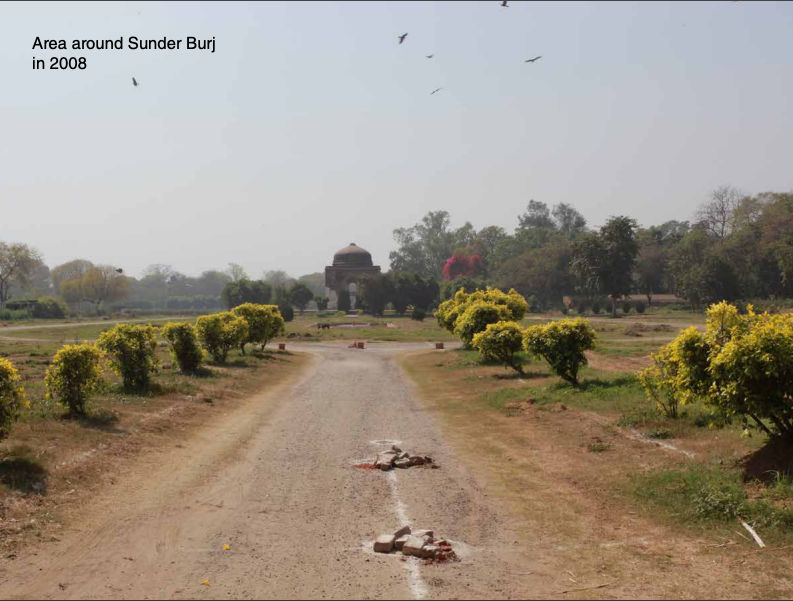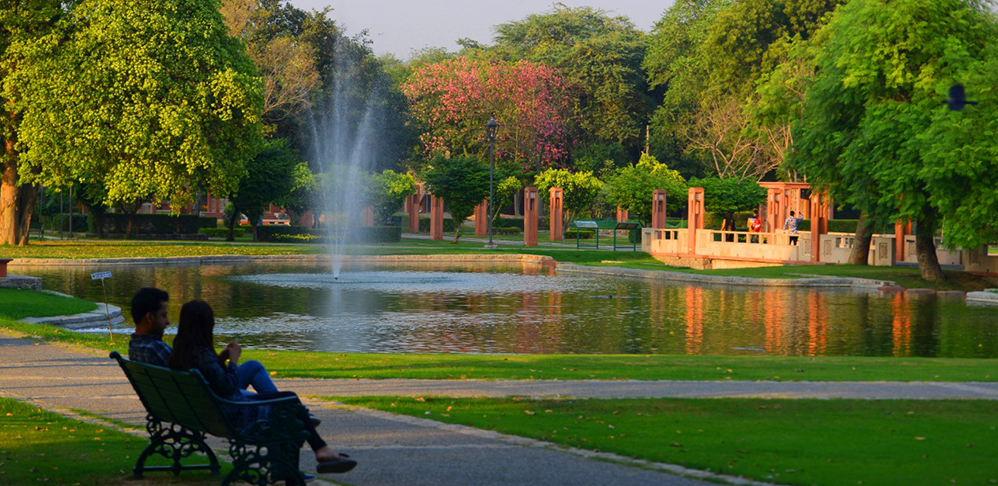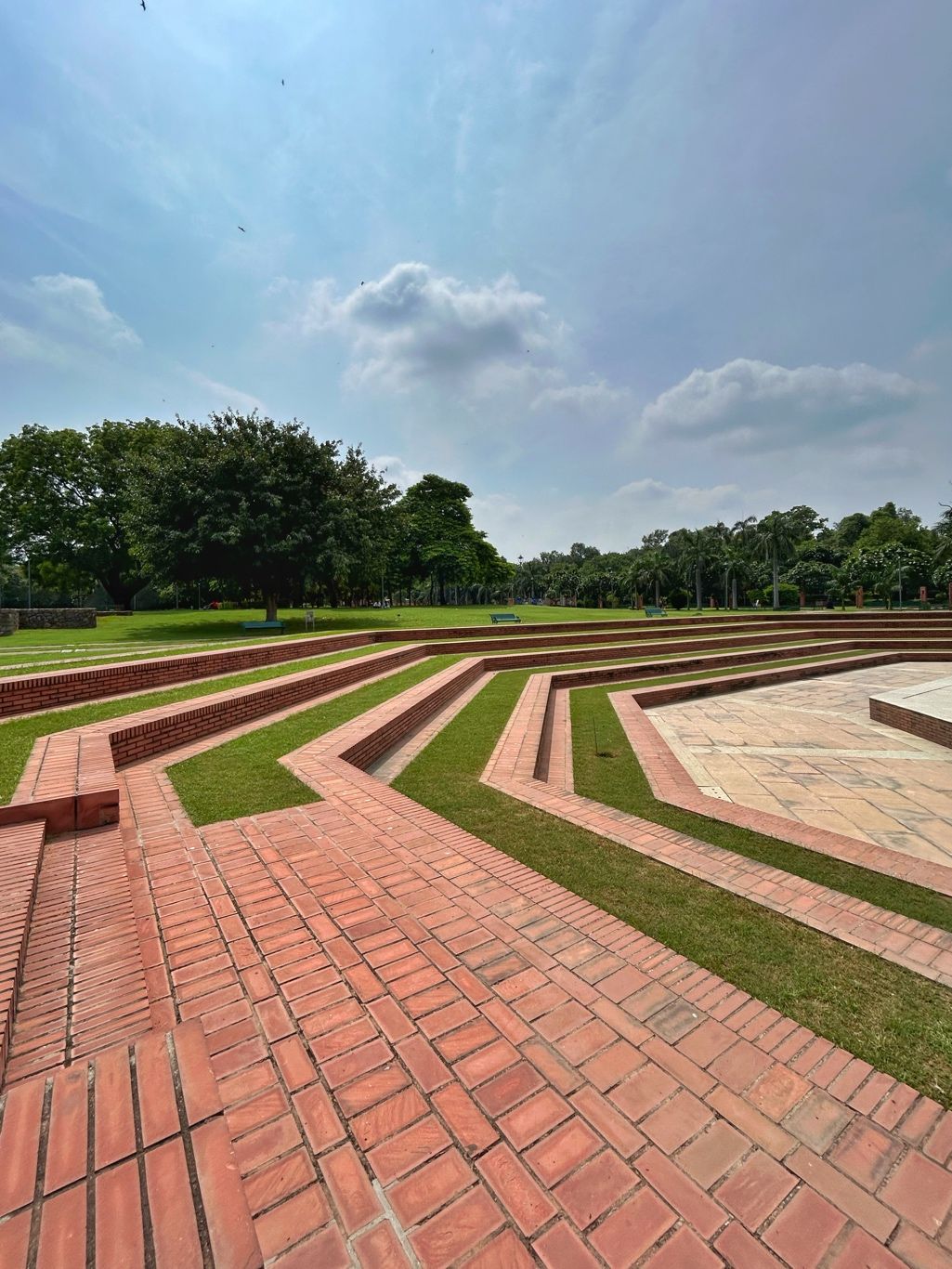

Sundar Nursery
Historical & Modern Significance
Why is Sunder Nursery an important site to visit?
Sunder Nursery stands as one of Delhi's most important historical sites, housing six UNESCO World Heritage monuments within beautifully restored gardens. Its unique blend of Mughal and British colonial influences offers visitors a rare glimpse into multiple periods of Indian history in one location. The recent conservation effort has transformed what was once a forgotten, overgrown space into a living museum of cultural and botanical heritage.
The history of Sunder Nursery can be captured in four major transformations since the 16th century.
Azim Bagh (16th century)
Originally named Azim Bagh, this garden held significance during Humayun's reign (1530 - 1556). Its strategic location between Humayun's citadel (Dinapanah, Purana Qila) and his tomb near the Yamuna river made it an important site in Mughal Delhi.
British Park (20th century)
The British repurposed the area into a botanical experimentation center, introducing plants from around the world to assess their suitability for the emerging imperial capital of New Delhi. This era not only shaped the nursery's landscape but also enriched the region’s botanical heritage.
Government Nursery (1947 - 2008)
After India's partition in 1947, the site served as a refugee camp before being converted into a government-run nursery. Over time, however, it fell into neglect. By the early 2000s, the once-thriving garden was largely forgotten, overgrown with vegetation, and in need of restoration.
Sunder Nursery (2008 - Present)
In 2007, the Aga Khan Trust for Culture (AKTC) initiated a restoration project in partnership with the Central Public Works Department (CPWD), the Archaeological Survey of India (ASI), and the South Delhi Municipal Corporation (SDMC). This transformation revived the area's heritage structures and landscapes.
The park was opened to the public in February 2018 and now welcomes over a million visitors every year, making it one of Delhi’s most loved green spaces.
Why is it called Sunder Nursery?
The name likely comes from the central monument, Sunder Burj. "Sundar" means beautiful, and "Burj" means tower. The intricately ornamented structure earned this colloquial name, which eventually extended to the entire park.
What was the restoration work like?
The restoration is evident when visiting Sundar Burj. The ceiling displays Mughal artistic elements featuring sun and moon motifs - common symbols representing vitality and wisdom in Mughal architecture. Visitors can easily distinguish the restored panels from original ones.
Another area that showcases AKTC's comprehensive restoration work is the Garden of Delight.
Why are gardens an important concept in the history of Delhi?
Gardens held special importance during Persian rule, particularly under the Mughals. Sunder Nursery features a 550-meter central vista that draws from 16th-century garden traditions. This "Garden of Delight" combines Persian and Mughal influences, merging natural areas with formal gardens around historical structures.
What are some things to notice in the garden?
When visiting, walk through the Garden of Delight to experience its flowing water, marble fountains, and flower beds. Notice the symmetry around the central pools and crafted elements like monolithic sandstone light poles and geometric flower bed edging.
A symbol you will come across repeatedly in Indo-Islamic architecture is the Lotus. It represents purity, rebirth, and spiritual enlightenment due to its unique life cycle: rooted in mud, it rises to bloom beautifully above the water, symbolizing the journey from ignorance to knowledge.
Bonus
As you proceed towards Sundar Nursery's entrance by road, you will cross a circle with a tower at its center.
This site, Sabz Burj, often overlooked, is believed to be the final resting place of Humayun's mother, Maham Begam, who died in 1533. The name of Sabz Burj comes from the sabz (Persian for green) tiles on its neck.
Further reads: Nizamuddin Urban Renewal Initiative Annual Report 2021
More in the Sundar Nursery series




